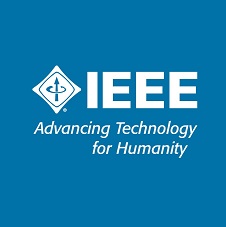Abstract
In recent years, there is a explosive growth in a internet users which require a broadband access network with high capacity and better flexibility and gets service in “anywhere-anytime” manner. The solution is a FIWI technology which proving itself a main tool in the field of telecommunication by its own merits over the other existing technologies. Fiber-Wireless (FiWi) Network is a combination of Passive Optical Network(PON) and Wireless Mesh Network(WMN). It provides large bandwidth capacity and high stability in optical network and lower cost in wireless network. Therefore, FiWi gives users to broadband access service in an “anywhere-anytime” way. In this paper, the main focus on the ONU placement in FiWi network to make a cost-efficient network. The key issue in FiWi network is the placement of optical network unit (ONU) since ONU gives interface between the optical network and wireless network. The placement of ONU plays also an important role in network throughput. In FiWi network, placement of ONU such that it support both type of traffic i.e. Internet traffic and peer-to-peer (P2P) traffic. Internet traffic means traffic from the wireless client to internet and peer-to-peer traffic means traffic from one wireless client to another wireless client. In this paper, the related work done in ONU placement to support both type of traffic and to minimizing the numbers of ONU in a FiWi network is studied. In this paper, how to save energy in ONU in case of low-load or zero-load is also discussed. This is the review paper for enlightening the trends of ONU placement in a FIWI access networks.
I. INTRODUCTION
In past year there is a explosive growth in the field of broadband access technologies which basically required higher bandwidth, better flexibility and lower cost access network and enable users to access internet in a flexible manner. The networks which are providing services for the internet are optical access networks and wireless networks.The PON gives higher bandwidth capacity and stability for accessing the internet but it fails to provide service to user in “AnyTime AnyWhere” manner and it also requires higher cost due to the usage of optical devices. On the other hand the wireless access network such as WIFI or WIMax are now mostly uses as they are providing services at lower cost and also serves better flexibility to the user. However, interference and lower bandwidth limits its reliability.
IV. CONCLUSION
In this paper, firstly the broadband access technology including opical access technology,wireless access technology and FiWi technology is discussed. The placement of ONU is such that it support the internet traffic as well as p2p traffic.For that a different ONU placement algorithms considering both internet traffic and p2p traffic is studied. For ONU placement in internet traffic we study random, greedy and SA algorithm. From literature survey it is examined that greedy algorithm performs very well but at higher deployment cost than SA. The LBOP algorithm discussed in the literature considered both internet traffic and p2p traffic which minimizes the number of ONUs required in the network. From literature it is examined that the performance of LBOP algorithm is less than Tabu search algorithm but LBOP algorithm is cost efficient.








